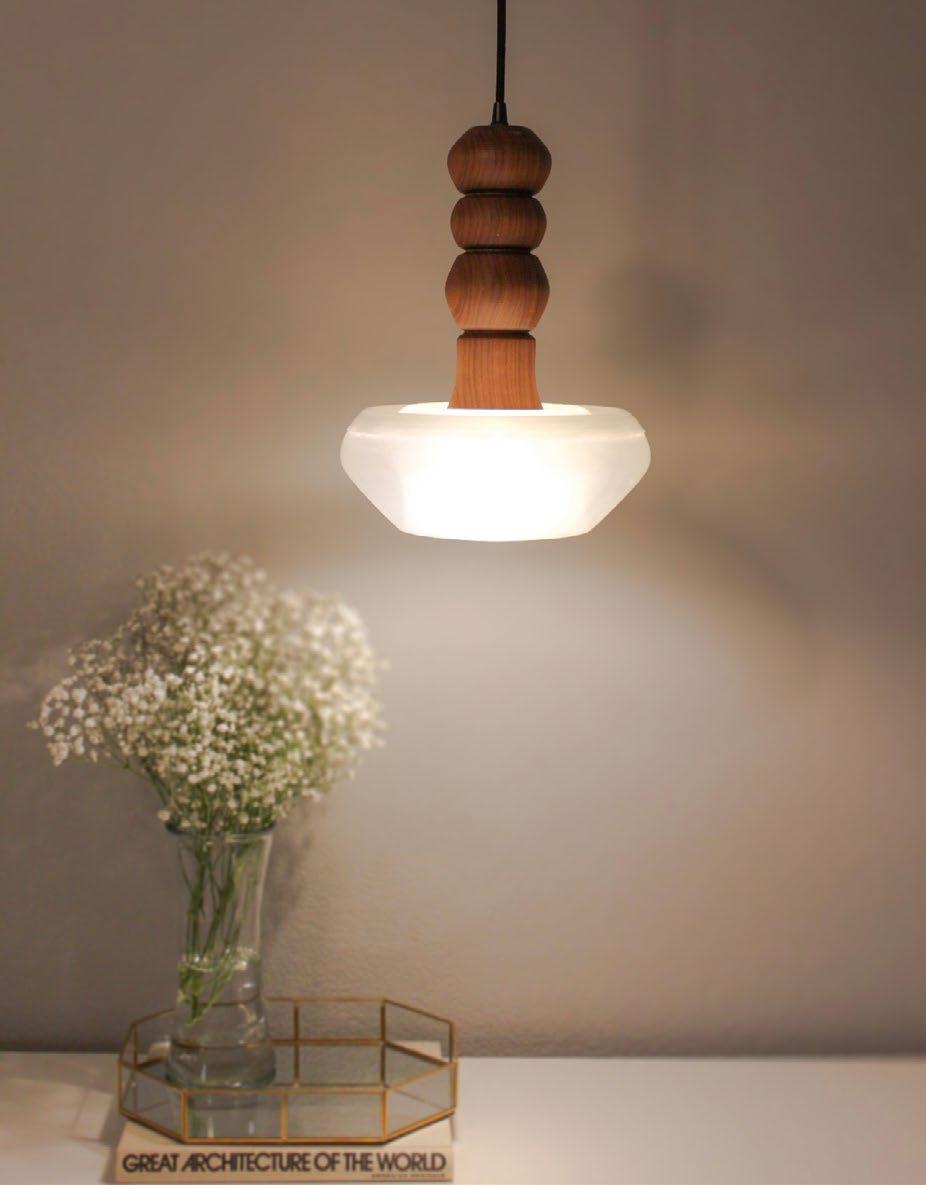ec
FAY JONES SCHOOL OF ARCHITECTURE + DESIGN, THE UNIVERSITY OF ARKANSAS | UNDERGRADUATEMy name is Emily Creek, and I am a fourth-year student at Fay Jones School of Architecture and Design at The University of Arkansas. I am expected to graduate in May 2023 with a bachelor’s degree in Interior Architecture and Design.
As a current student at the Fay Jones School of Architecture + Design at The University of Arkansas, the expectation to present functionally beautiful spaces requires the ability to create innovative designs representing conceptual ideas. Evidence of creativity and technical skills is present in my work. I am a dedicated individual valuing my abilities to communicate and articulate design intentions effectively. With a strong understanding of the design process, I am able to demonstrate programmatic objectives, conceptual, and evidence-based design, allowing me to facilitate innovative work.
For as long as I remember, I have been highly observant of how environments evoke feelings. The realization of this has curated my immense interest in deeply understanding culture, society, and the world around me, fueling my attentiveness in gaining diverse perspectives to create a thoughtful approach to drive my passions. As an intentionally driven individual, I value creative expression as a chance to form a positive impact on the built environment. Ultimately, I see design as an opportunity to make the world a better place for every individual.
Although I enjoy the design process in its entirety, I find it most inspiring to explore ways to translate conceptual ideas that shape the human experience. When establishing a concept, elaboration, research, and generation of ideas transform a concept into a spatial language that drives the three-dimensional experience. This process is carefully considered in each project but is unique to the programmatic requirement. My design solutions consider ways to implement custom solutions that communicate attention to detail. Every decision made roots back to the concept established in the beginning phases of the design process. Not only does this create an aesthetic relationship between the space but allows the design to convey a message that evokes feelings within the user’s experience.
I have recently been selected as a 2023 Metropolis Future100 Award Recipient, which recognizes the top 50 graduating students from interior design programs in the United States and Canada. I am extremely honored to be a part of an impressive group of rising leaders that are defining and reimagining the practice of architecture and interior design. This recognition illustrates the standards and quality of work I hold myself to but also demonstrates my dedication to creating thoughtful, innovative, and inclusive design. Driven by my passions, I am eager to expand my impact on the built environment and produce success.
CONTACT
(314) 707-1334
eacreek@uark.edu
19emilycreek@gmail.com
INVOLVEMENT
American Society of Interior Designers (ASID) Student Chapter Student Mentor
Zeta Tau Alpha Epsilon Member
SKILLS
Adobe Illustrator
Adobe InDesign
Adobe Photoshop
Autodesk Revit

Enscape
Grasshopper
Hand Drafting
Microsoft Office
Rhino 6
PC Proficient
V-Ray
RECOGNITION
2023 ASID Portfolio
Competition Semi-Finalist
2023 Metropolis Future100
Recipient

Design IV + Design III Coursebook Awardee
Spring 2022 Dean’s List
EDUCATION
Expected Graduation May 2023
Bachelor’s of Interior Architecture and Design | Fay Jones School of Architecture + Design at University of Arkansas
EXPERIENCE
Polk Stanley Wilcox Architects
Interior Design Intern | Fayetteville, AR | May 2022 - Present Met and contacted representatives to discuss product lines and samples
Assisted in space planning and selection of materials and research associated with specific budgets and schedules
Create working drawings and 3D renderings in Revit, Enscape, and Lumion
Participate and communicate in collaborative, internal team meetings through the design phases
University of Arkansas Teaching Assistant
Digital Media in Design | Fayetteville, AR | August 2022 - December 2022
Contributed to the development of course materials to ensure content and methods of delivery meet learning objectives
Aided professor with assessing students development throughout the semester
Provided effective, timely, and appropriate feedback to students to support their learning
VOLUNTEER WORK
Team Activities for Special Kids (TASK)
St. Louis, MO
Volunteered in various activities created to enrich the lives of kids with special needs
Provided guidance to children involved in physical and social activities
St. Lucas UCC Mission Trip
Denver, CO
Volunteered at local food pantry + distributed meals and food items
Spent time with children and families staying at the Denver Ronald McDonald House
St. Lucas UCC Mission Trip
Frakes, KY
Provided aid in home improvement projects Built homes in partnership with families in need
space “folds” into circulation area
unfold
The search for emotional well-being requires you to open yourself to new understanding, finding the gift inside. The concept for this project is grounded in the idea of unfolding or unwrapping to find healing inside. Movement, shifts in scale, and subtly angled walls create a sense of discovery and unfolding for each patient. An outpatient behavioral health clinic that specializes in services for substance abuse patients, and those with mood and anxiety disorders ranging in ages 2-18 years.

space “folds” into circulation area push form to create dynamic space
rectilinear form push form to create dynamic space
space “folds” into circulation area push form to create dynamic space the “core” acts as the central space
space can “fold” into circulation area angle rectangular core

rectilinear form push
rectilinear form push form to create dynamic space
space “folds” into circulation area push form to create dynamic space the “core” acts as the central space
push form to create dynamic space push form to create dynamic space
INVESTIGATION OF SPACE + ERGONOMICS
In the beginning steps of the design process, a thorough investigation of space provides an informative starting point for evidence-based design. The process includes the study of human factors as well as the creation of various diagrams to represent qualitative and quantitative elements.
ANTHROPOMETRICS OF USERS
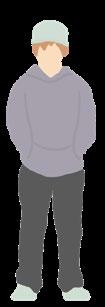
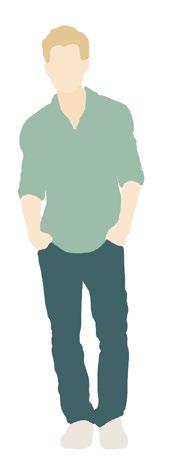
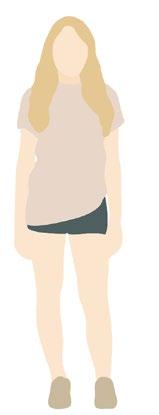
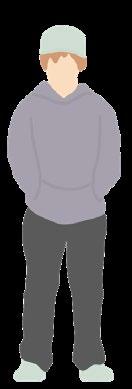
ADJACENCIES
As a step in schematic design + programming, adjacency diagrams are utilized in space planning, these preliminary design techniques inform decisions and are referenced later in the design process. Square footage and number of adjacencies are calculated in columns.
seat height
8-10 11-14
2-4 5-6 6-7 15-18 user accessibility
wheelchair width: 25”
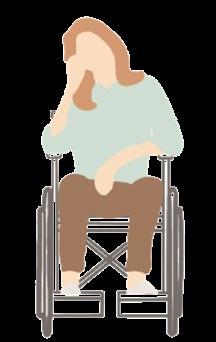
26 cm 31 cm 35 cm 38 cm 43 cm 46 cm
table height 46 cm 53 cm 59 cm 64 cm 71 cm 76 cm
height: 48”-53”
length: 30”-36”
range (front): 35° from vertical range (side): 6” range (vertical): 27”
standing height
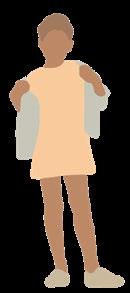
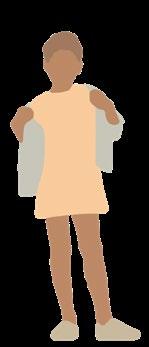
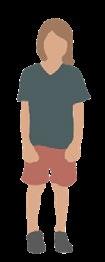
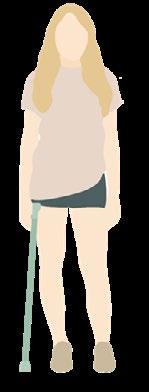
SPACE ALLOCATION
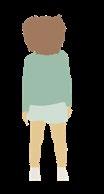
five in ten children with behavior disorders receive treatment
SITE ANALYSIS
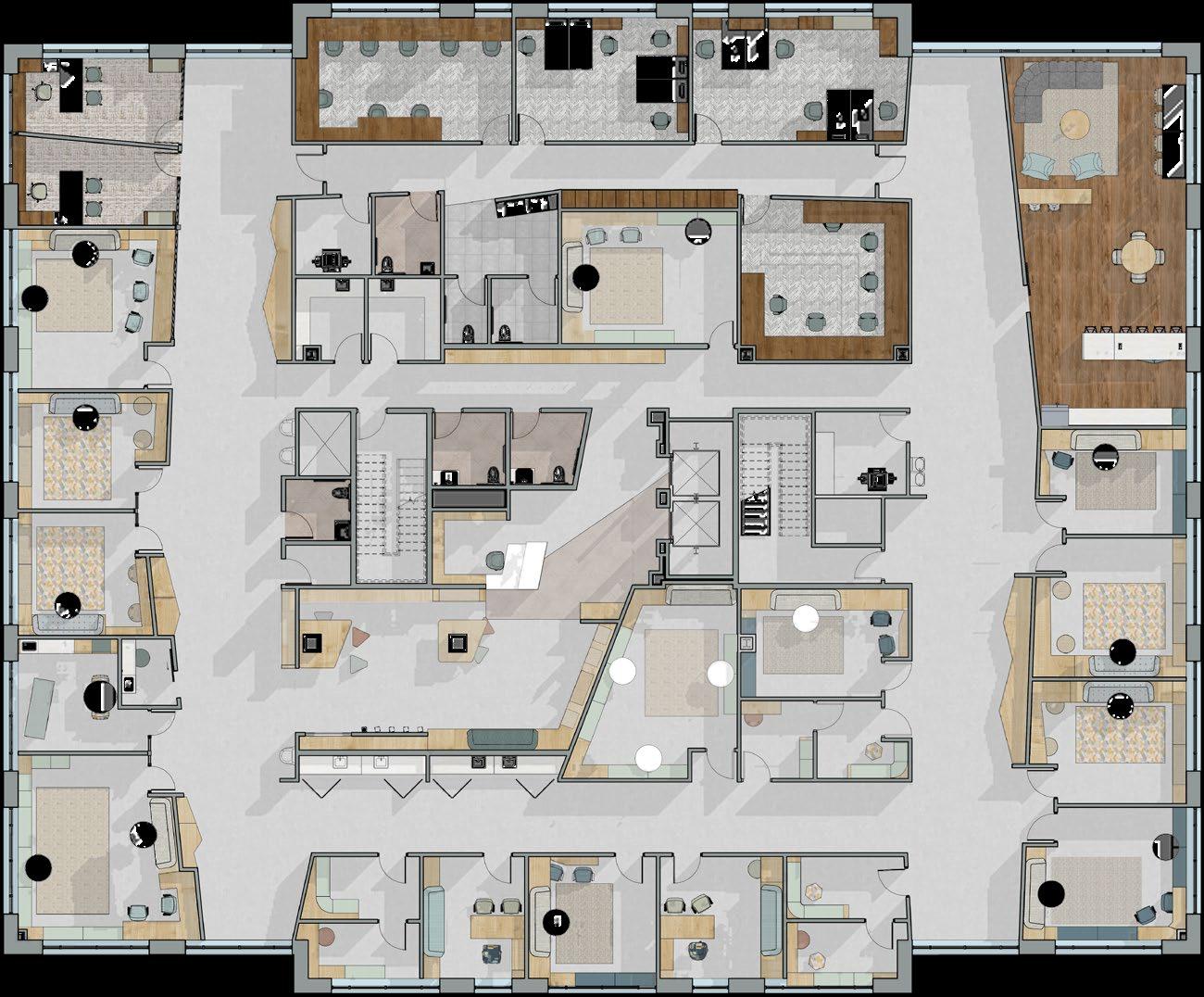
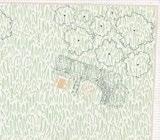
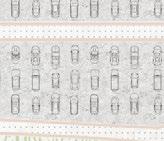
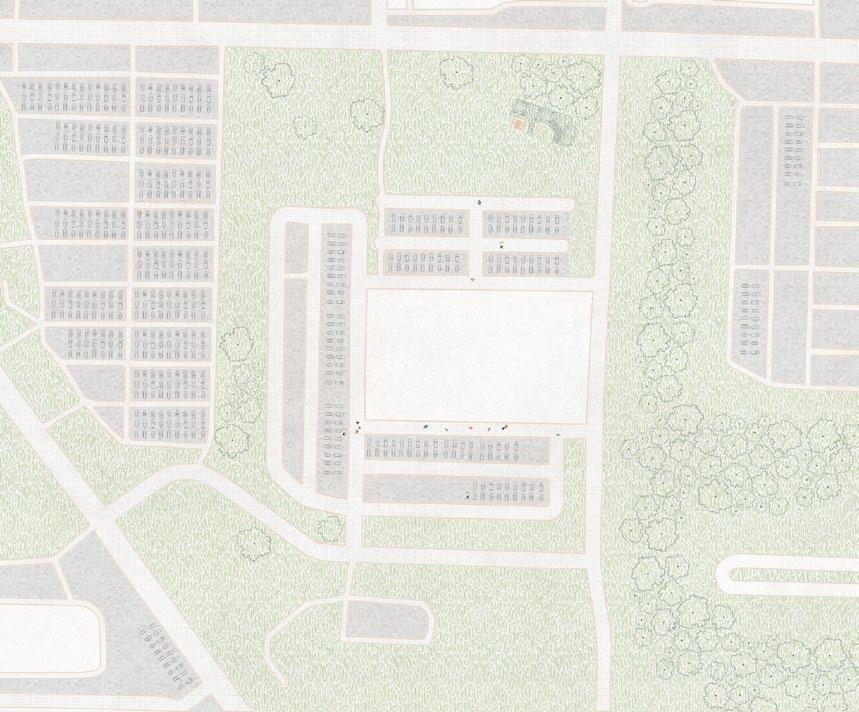
at least one in six children and young people have a diagnosable mental health condition
drinking water promotion anti-ligature drinking fountains are located surrounding the core for accessibility and promote water drinking
daylight design strategies wide corridors and subtle angled walls maximize interior daylight in each space supporting well-being
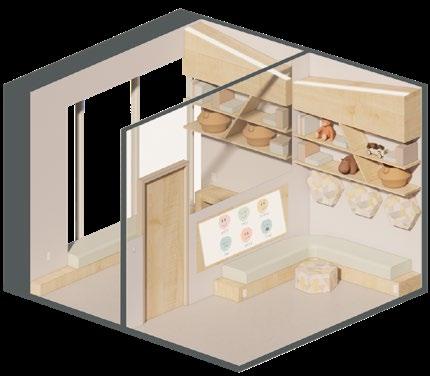
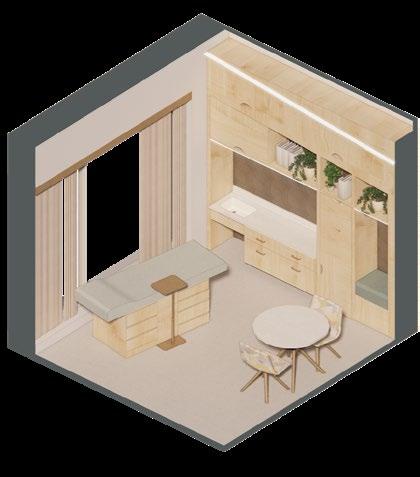
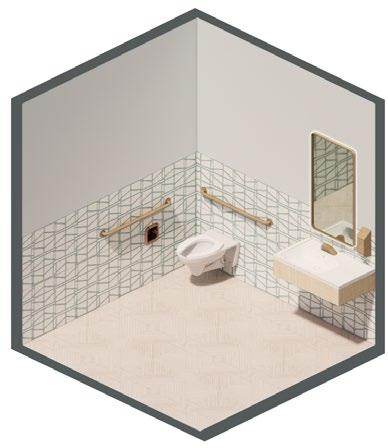
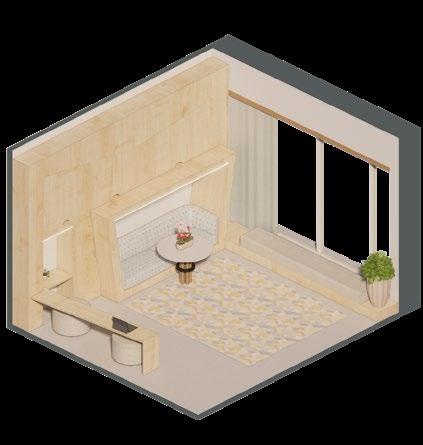
outdoor access to nature
civic engagement public space a healing garden located on the north side of the building is open to the public at no cost and accessible for individuals of all abilities
parking lots surround the site of the clinic, immediate views from the top floor consist of these lots
HEALING GARDEN

Nature as an emotional well-being tool has become increasingly more popular. Located on the north side of unfold behavioral health clinic a healing garden is available for patients, guests, employees and the public to promote engagement in nature.
LEGEND
vitals
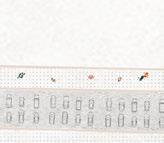
clean utility visitor lockers staff lockers
utility reception 1 2 3 4 5 6 7 8 9 10 11

copy room visitor restroom administrative workroom clinicians workroom staff lounge managers office
research consult small group therapy
office consult
12 13 14 15 16 17 18 19 20 21 22
DESIGN FEATURES

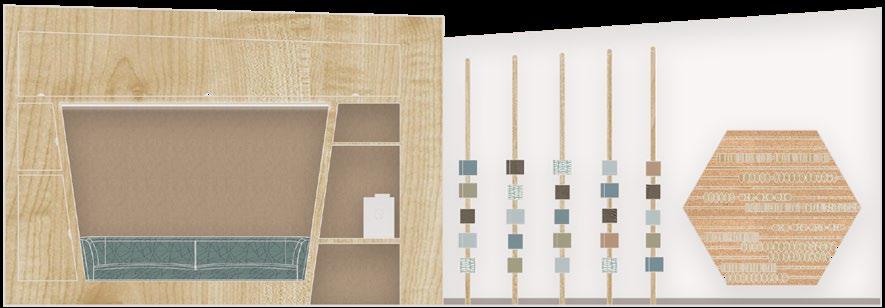

Movement is encouraged throughout the design with the implementation of wayfinding features such as floor changes in the arrival space. Angled flooring changes direct users to the first point of contact in the space.
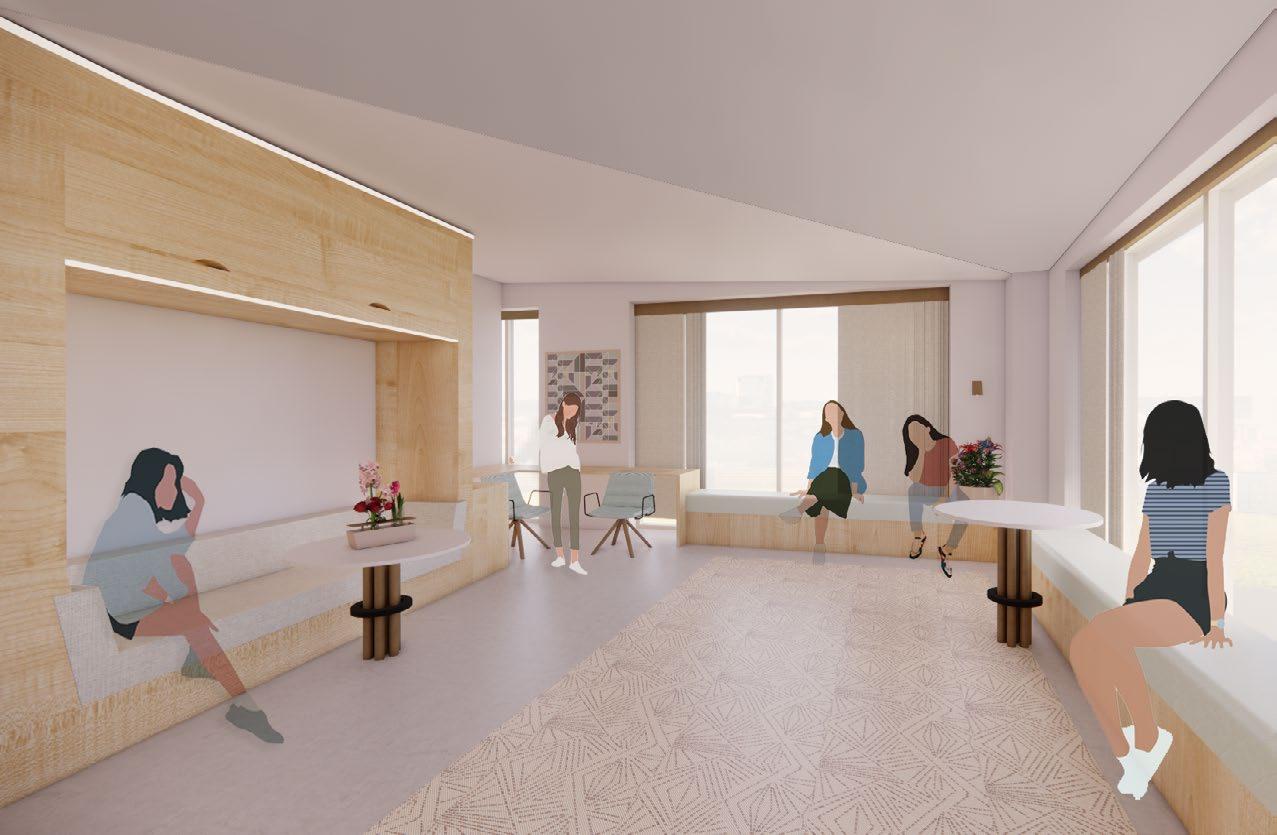
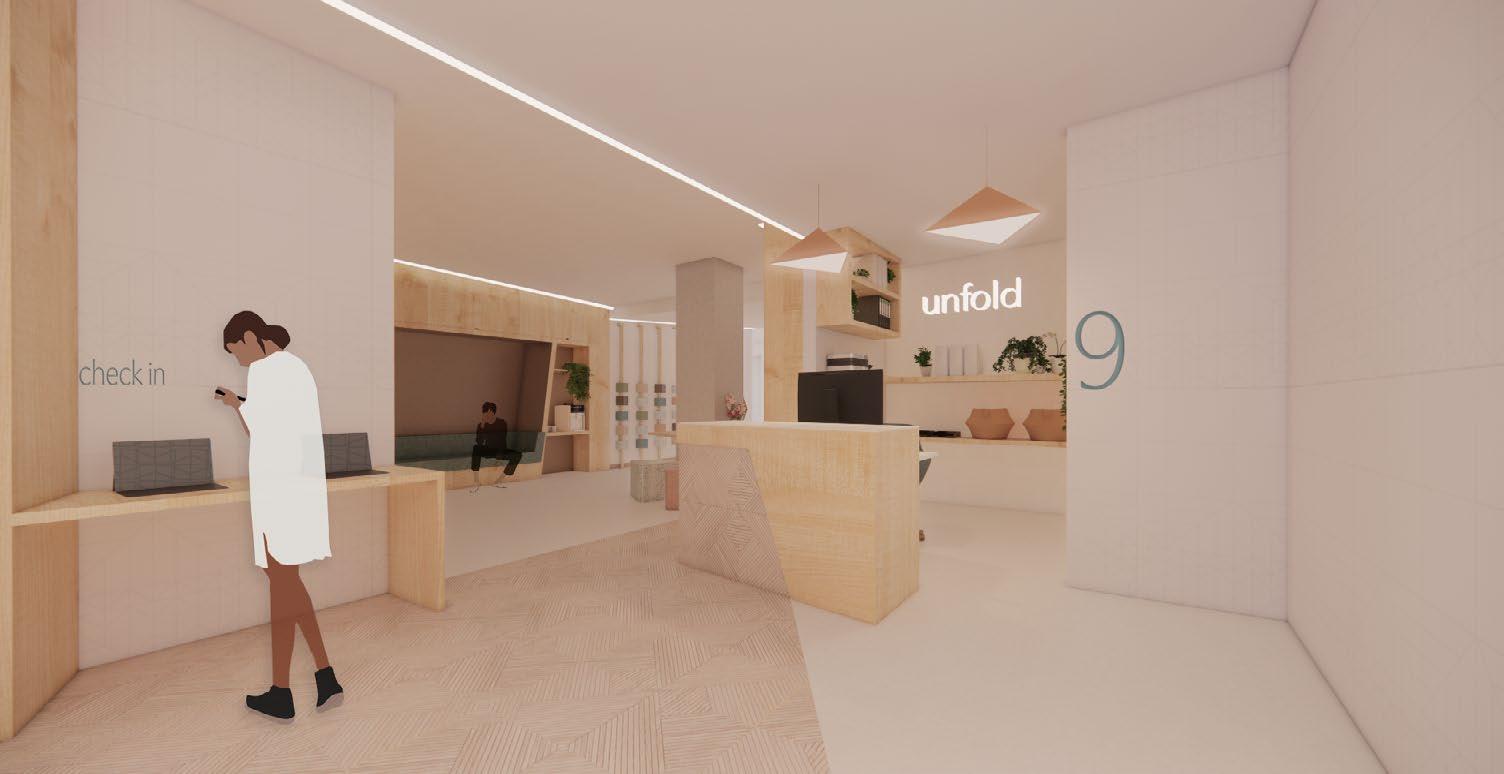
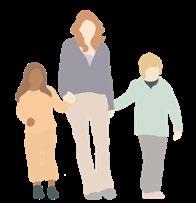
Distractive play including in the waiting area provides visitors of all ages with activities while waiting for appointments. Interactive blocks represent a shift in scale as materials used in adjacent spaces that new patients are most likely to visit prior to check-in are used in the interactive elements to familiarize them with spaces that can be frightening for someone beginning their healing journey. Colored blocks are covered with frequently used hues and allow patients to create a visual connection from the point of arrival.
Subtle angled walls support each space as angles reflect the act of unfolding as patients reveal parts of themselves throughout their healing journey. Built-in seating is provided in patient spaces throughout design while also providing a comfortable environment for visitors. Angles on built-ins reflect subtle angled ceilings.
design tex geometric creme upholstery
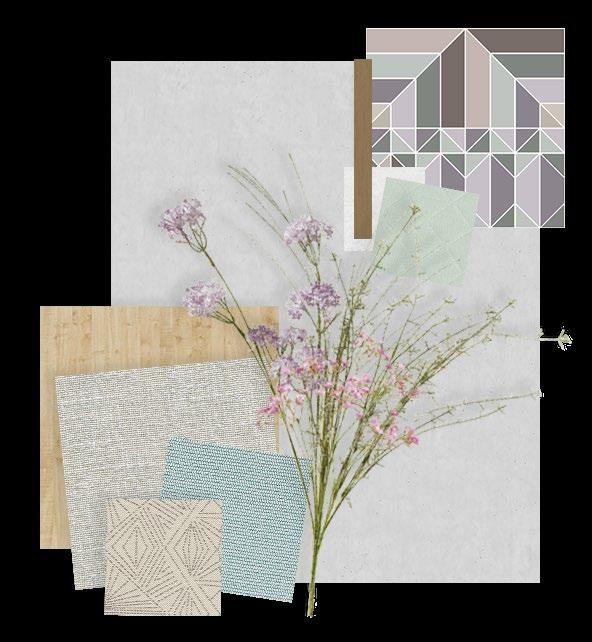
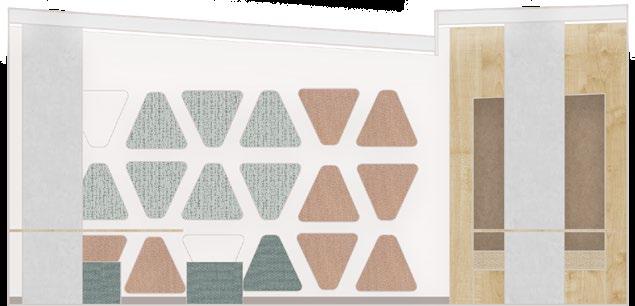
design tex ulster glacier upholstery design tex pause whitewater upholstery
concrete textured mormoleum
light oak wood


light bronze metal white marble magnetic dry erase
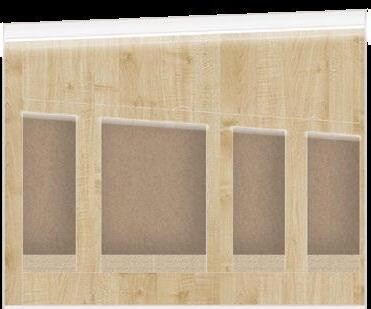
design tex burrad mint upholstery
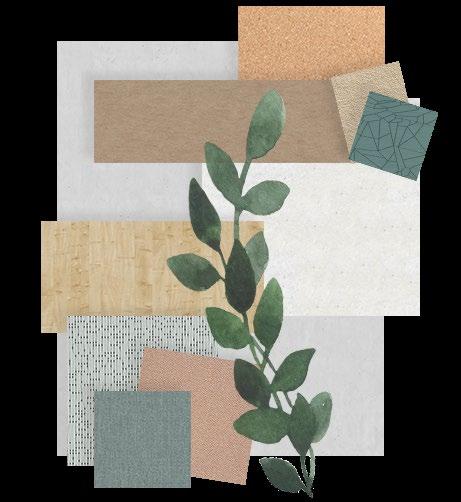
The creases revealed when unfolding paper expose paths along the journey, much like experience throughout a healing journey. Inspired by the creases made from paper folders, an origami crease pattern was used to create wall art and tile patterns used throughout the design. Various scaled shapes represent the ability to open yourself up as you experience the space.
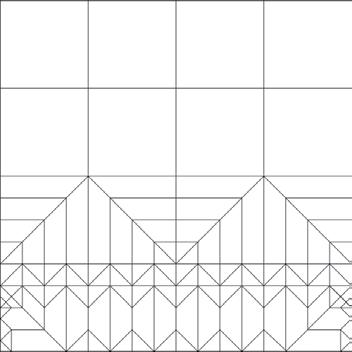
Muted complementary colors with various hues create depth and are correlative to material choices.
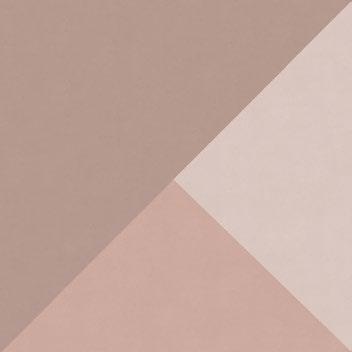
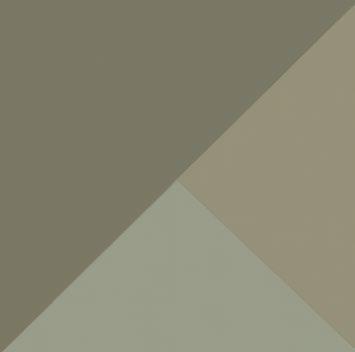
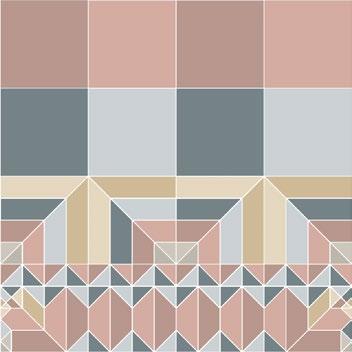
Various shades of this color provide a range complementing various materials as muted colors provide a warm tone for the lounge space.
Split complementary colors with various hues create depth throughout the pattern used as wall art that compliments material choices.
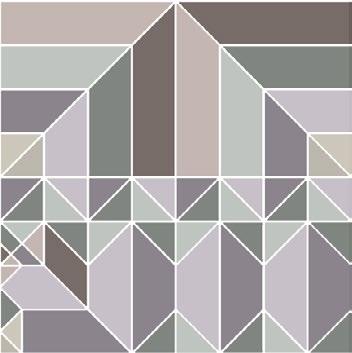
Various shades of this color provide a range complementing various materials while contrasting others. The muted colors provide a warm tone in the staff space while providing a different environment than treatment rooms.
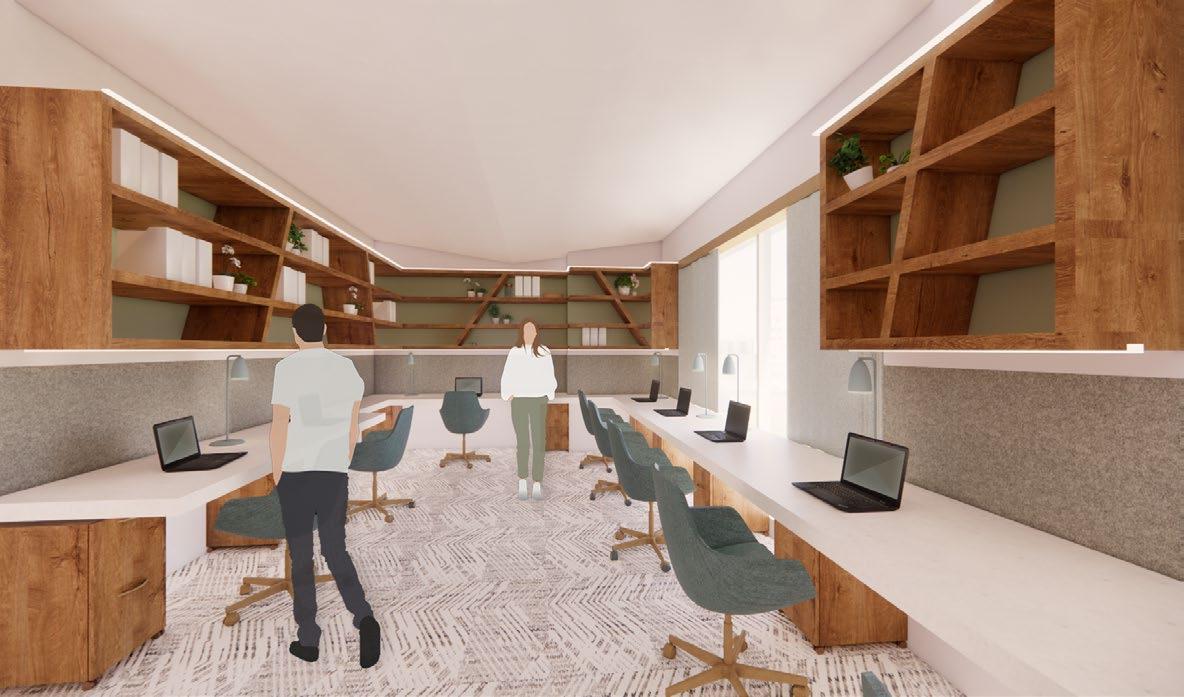
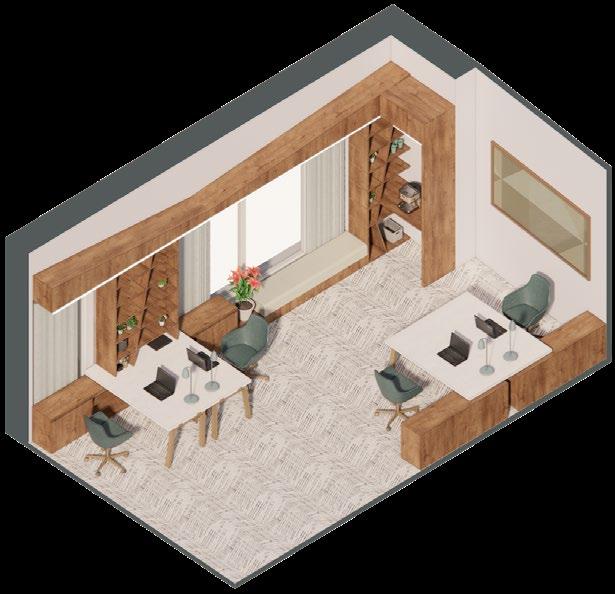
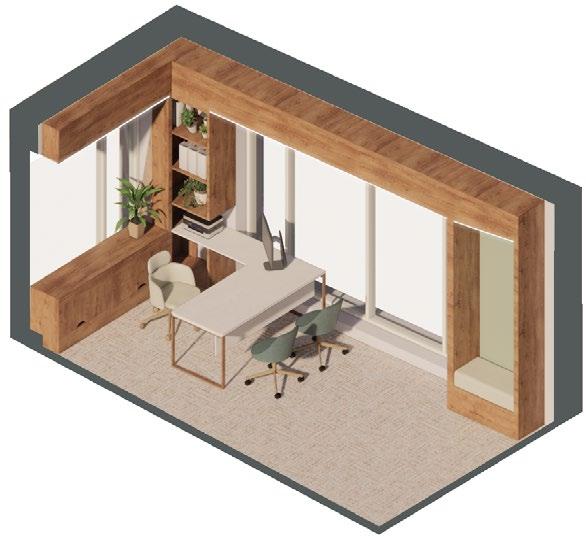
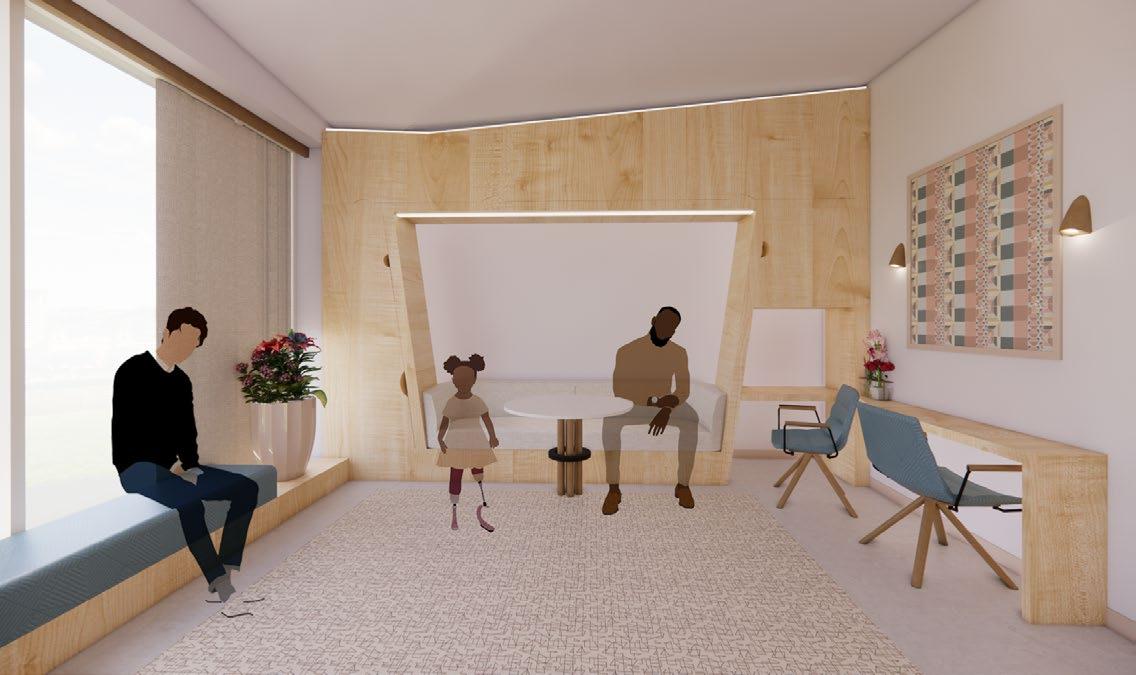
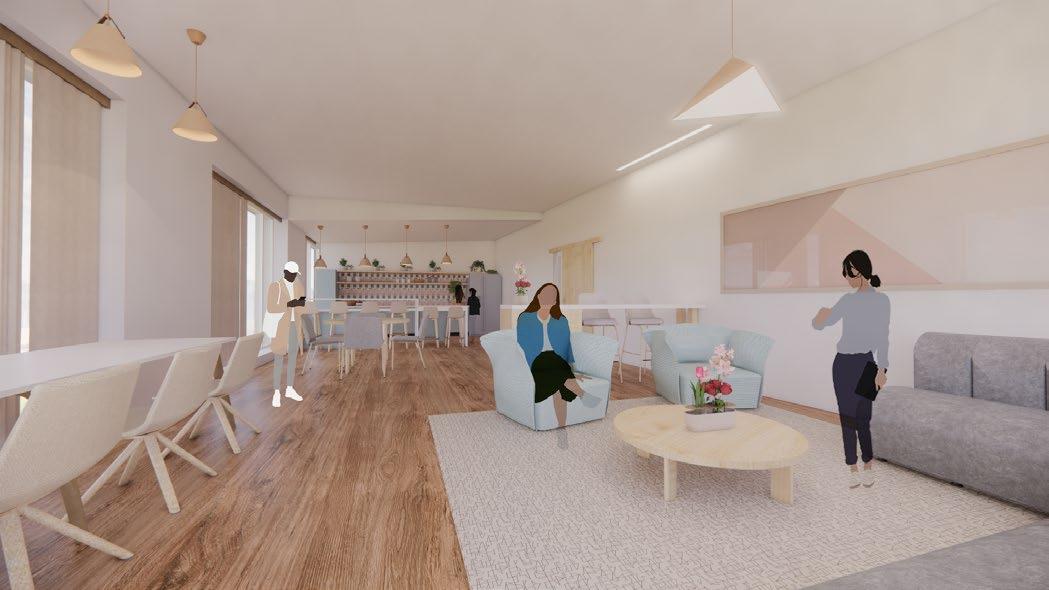
A design maximizing openness creates an environment that emphasizes employee and visitor engagement. Through innovative design details, harmonious + balanced materiality, and changing functionalities, the openness of the design creates a space welcoming a diversity of individuals to achieve success. An imaginative versatile community is achieved through innovation, unique characteristics, and a consideration of sustainability. The intertwining of departmental work creates the necessity for a vibrant environment.
form that inspired organization of focus work space
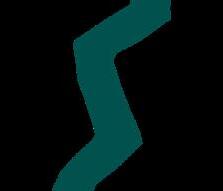


segment inspired shape of dining area masses portion that inspired curvilinear seating and placement
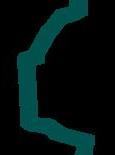
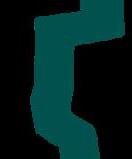
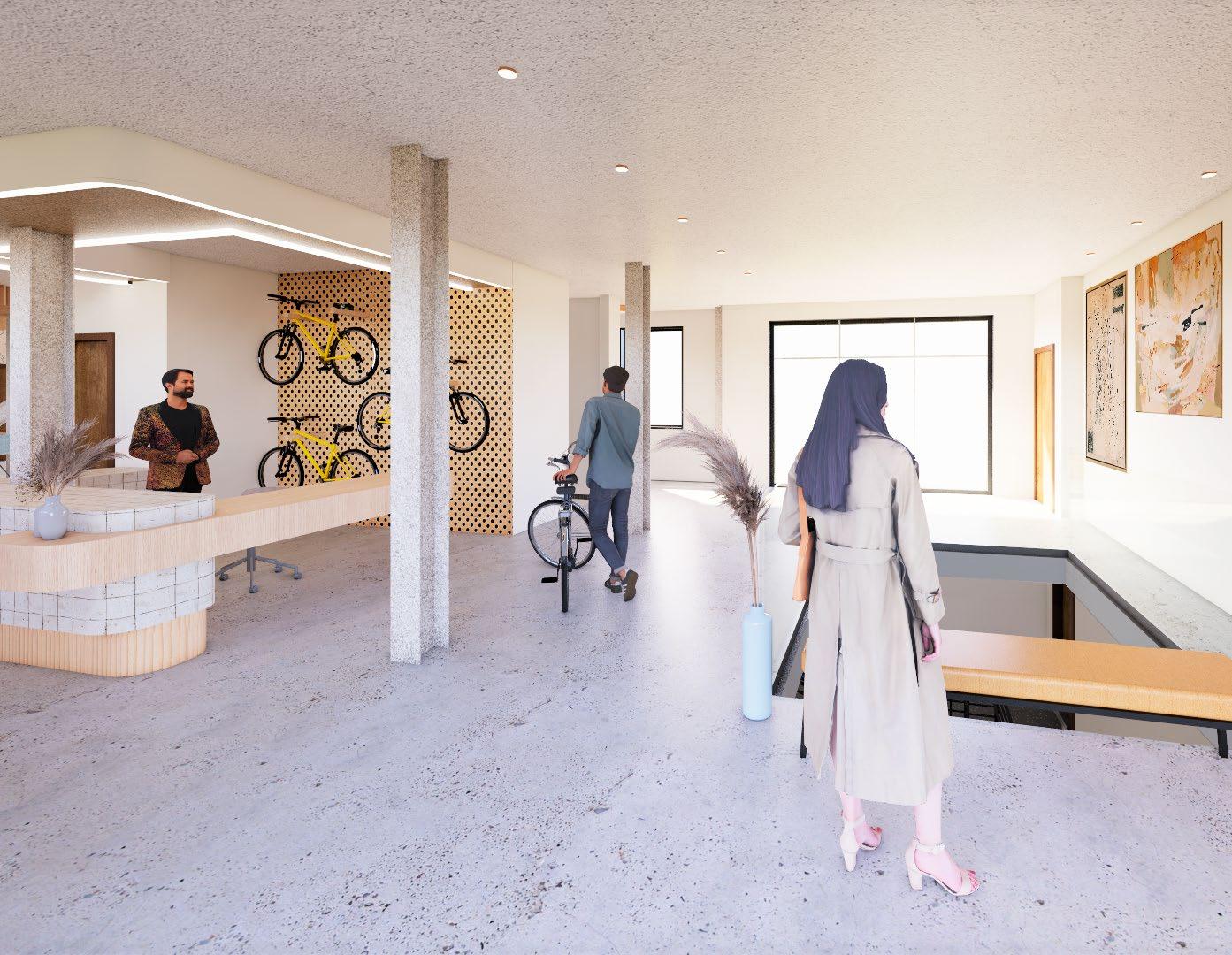
to reduce individual contributions that vehicular pollution causes, staff members have the option to utilize the frisco trail to bike as a means of transportation
employees are encouraged to positively contribute to the environment by utilizing adjacent trails to walk, jog, and run to work
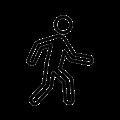
PROCESS OF DEVELOPING MULTI-FUNCTIONAL TYPICALS


mass stack form function outcome
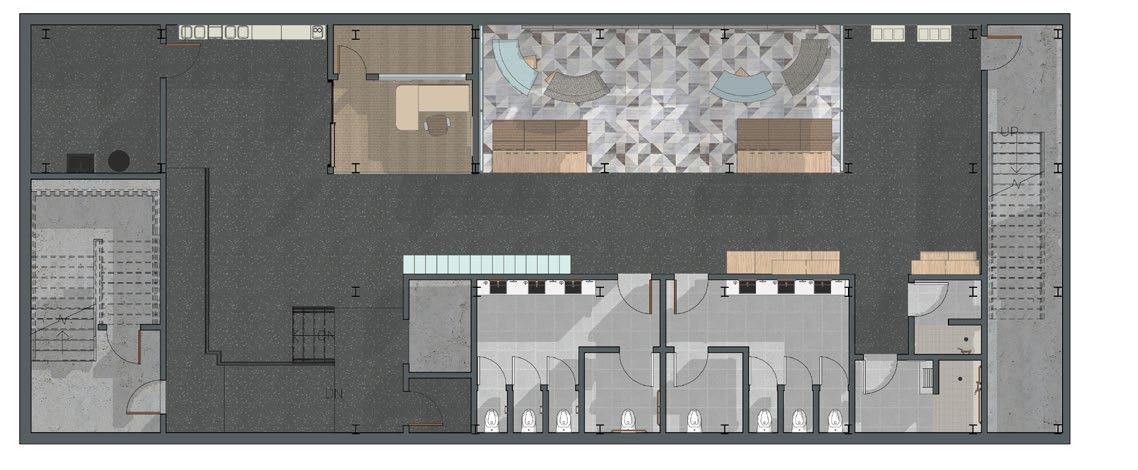
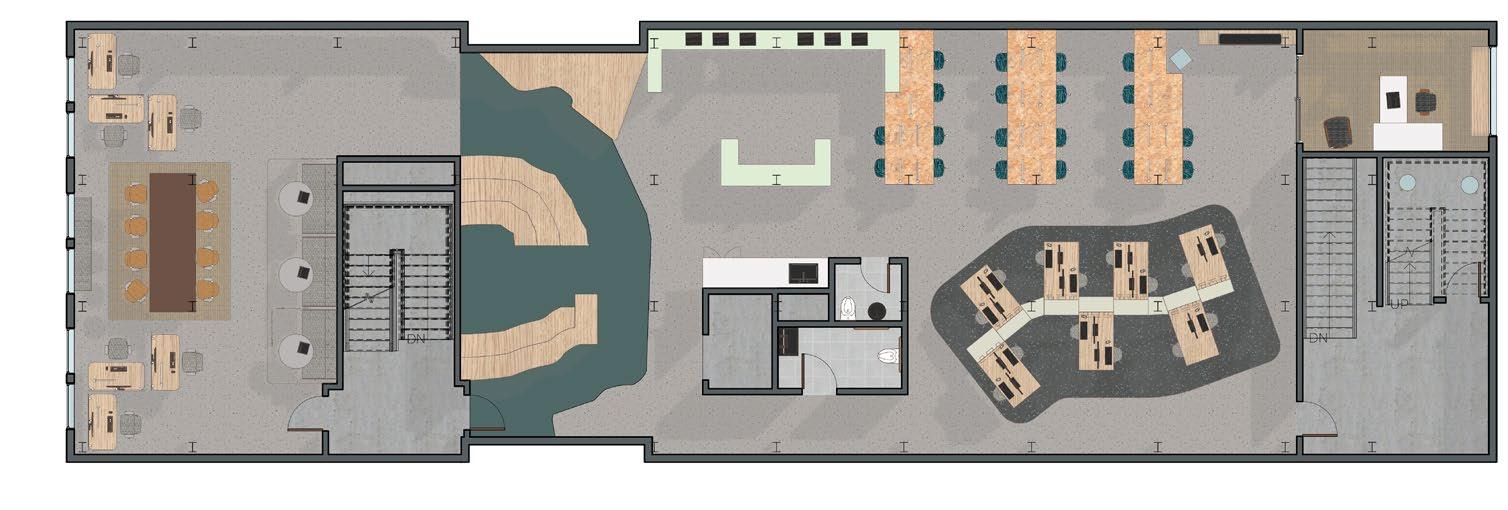
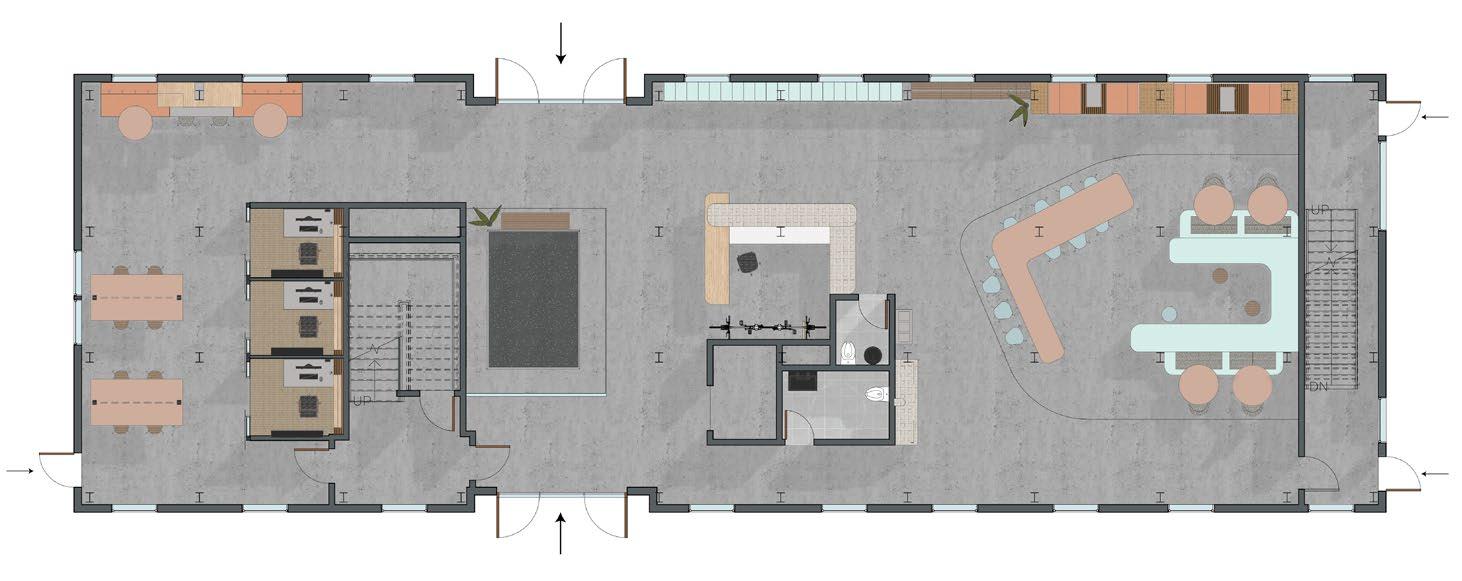
DESIGN FEATURES
Innovative design details used throughout the design maximize openness and encourage an inclusive environment . The emphasis on engagement provides a space for large events, t ouchdown/ meeting spaces, informal client meetings, or a welcome place for employees family members to hangout while mimicking cafe/coffee shop setting to enhance the experience.
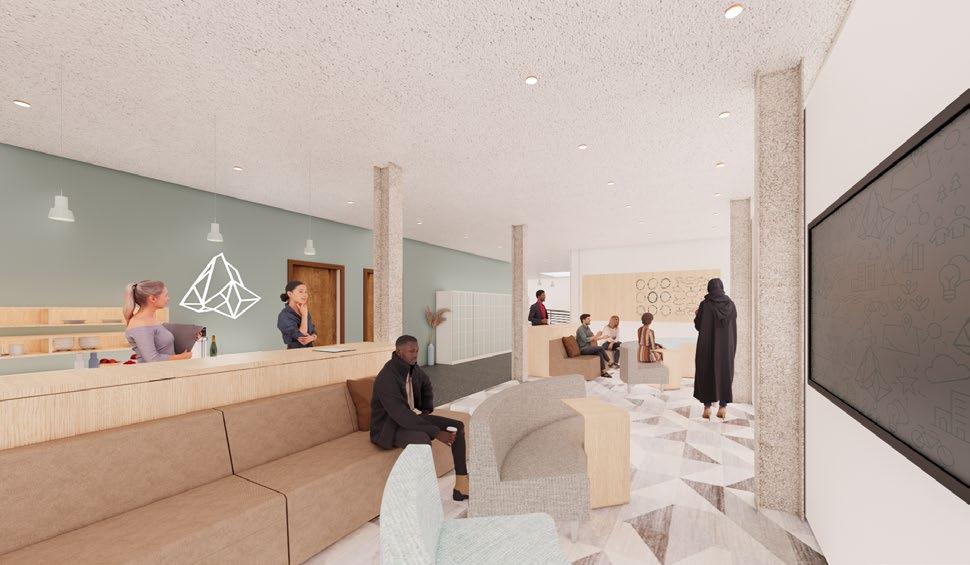
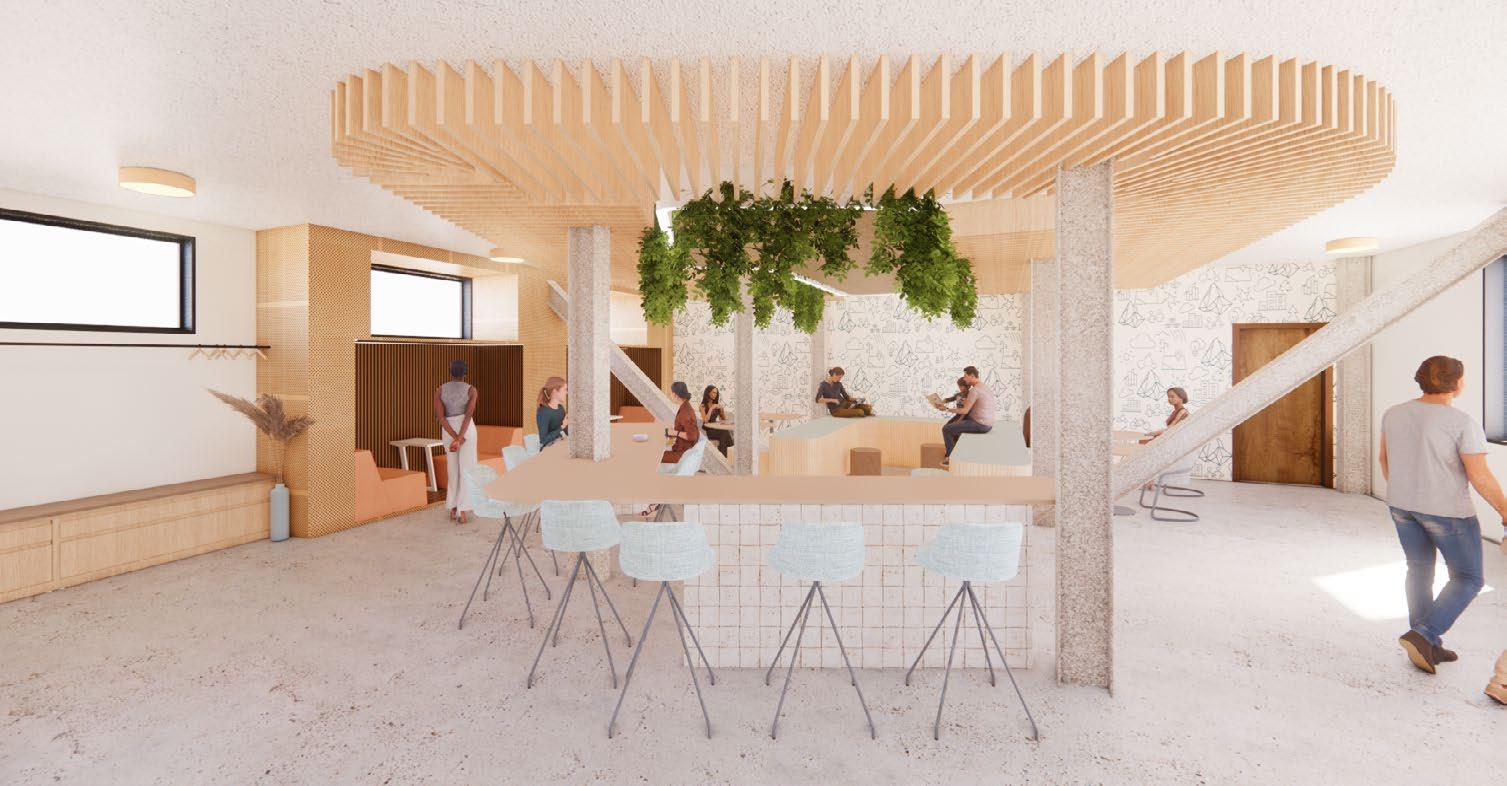
BRANDING
Wallpaper design utilizes the brands existing graphic design to promote identity throughout the space.
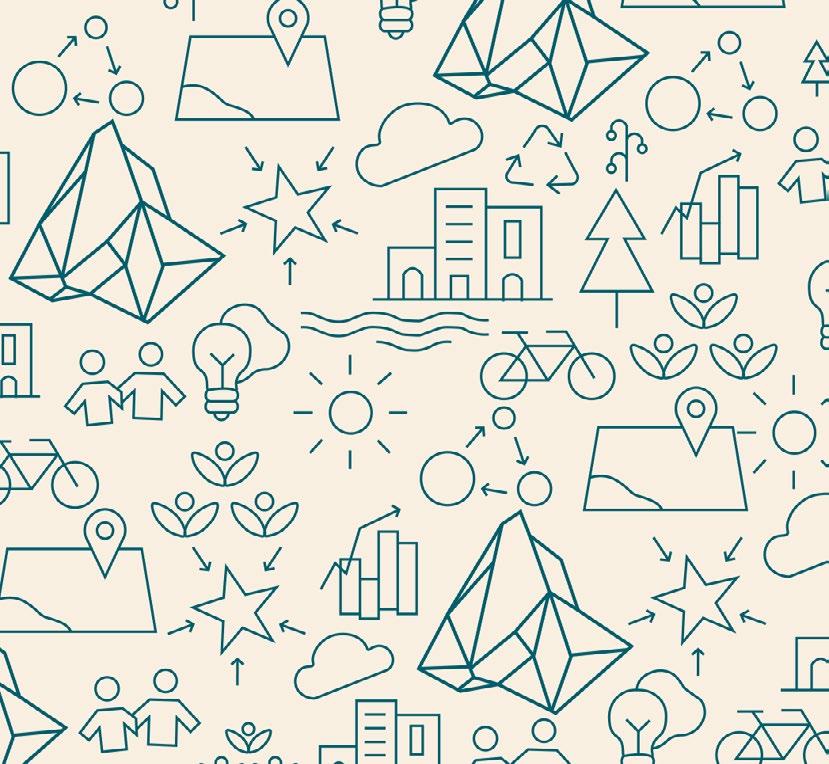
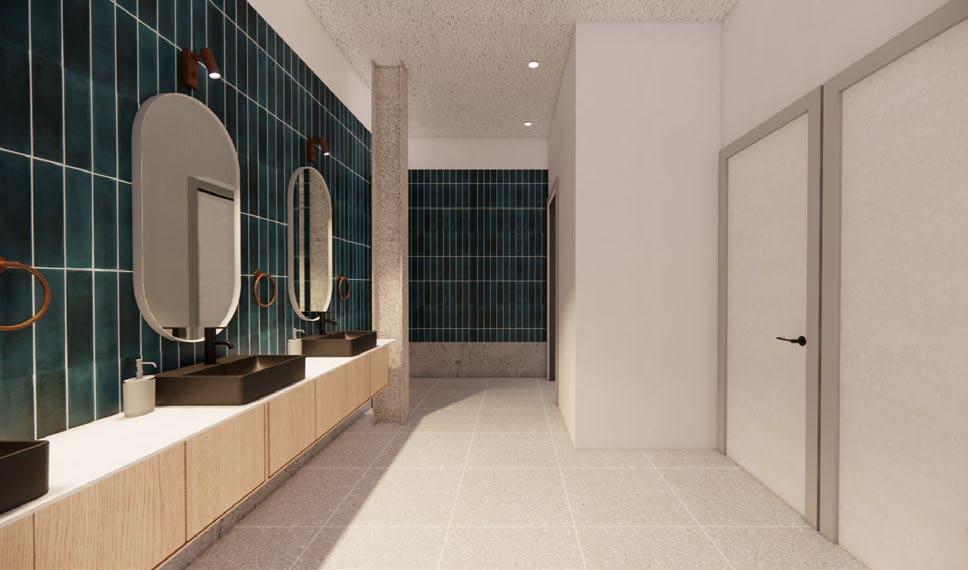
Material selection includes a variety of warm tones + textures while showcasing contrasting colors that represent the brand’s existing identity considering sustainability as well as sourcing materials locally as CACHE values supporting local businesses
Implementation of design elements that allow for changing functionalities supports various activities in each space. Furniture selections for the presentation space allow the area to be defined as various programmatic requirements as it also acts as an informal work area, staff lounge, or meeting space for all users. Orientation of the design maximizes possibilities for interaction while providing necessary circulation throughout the design. Harmony throughout the design is achieved through a balanced material palette while incorporating the existing brand identity.
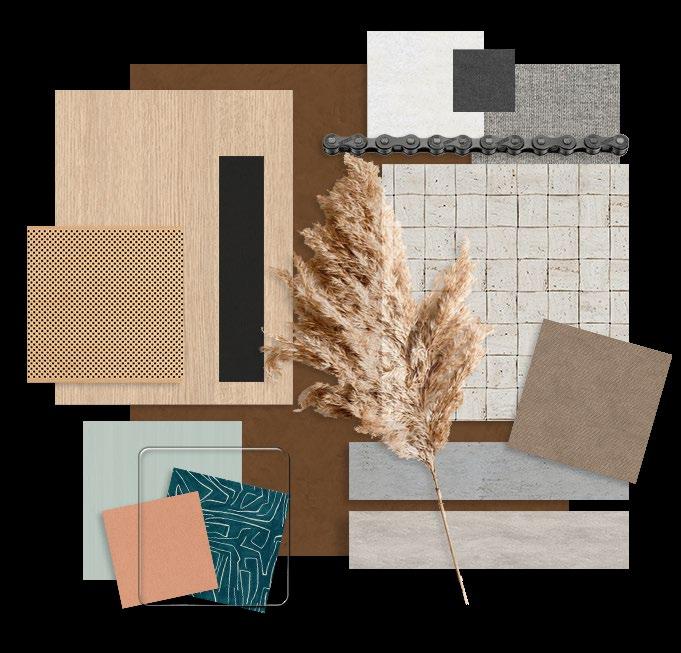
heimat village

create a sense of belonging
A place that you can call home; a sense of belongingness, acceptance, safety, and connection to one’s homeland. An inclusive and inviting community now occupies the former monastery and office for jacoby studios. This adaptive reuse project strives to integrate the German community surrounding the site while enabling the retired to detect a sense of belongingness while accommodating the needs of a retirement village.
connect the community to center community connection creates belongingness
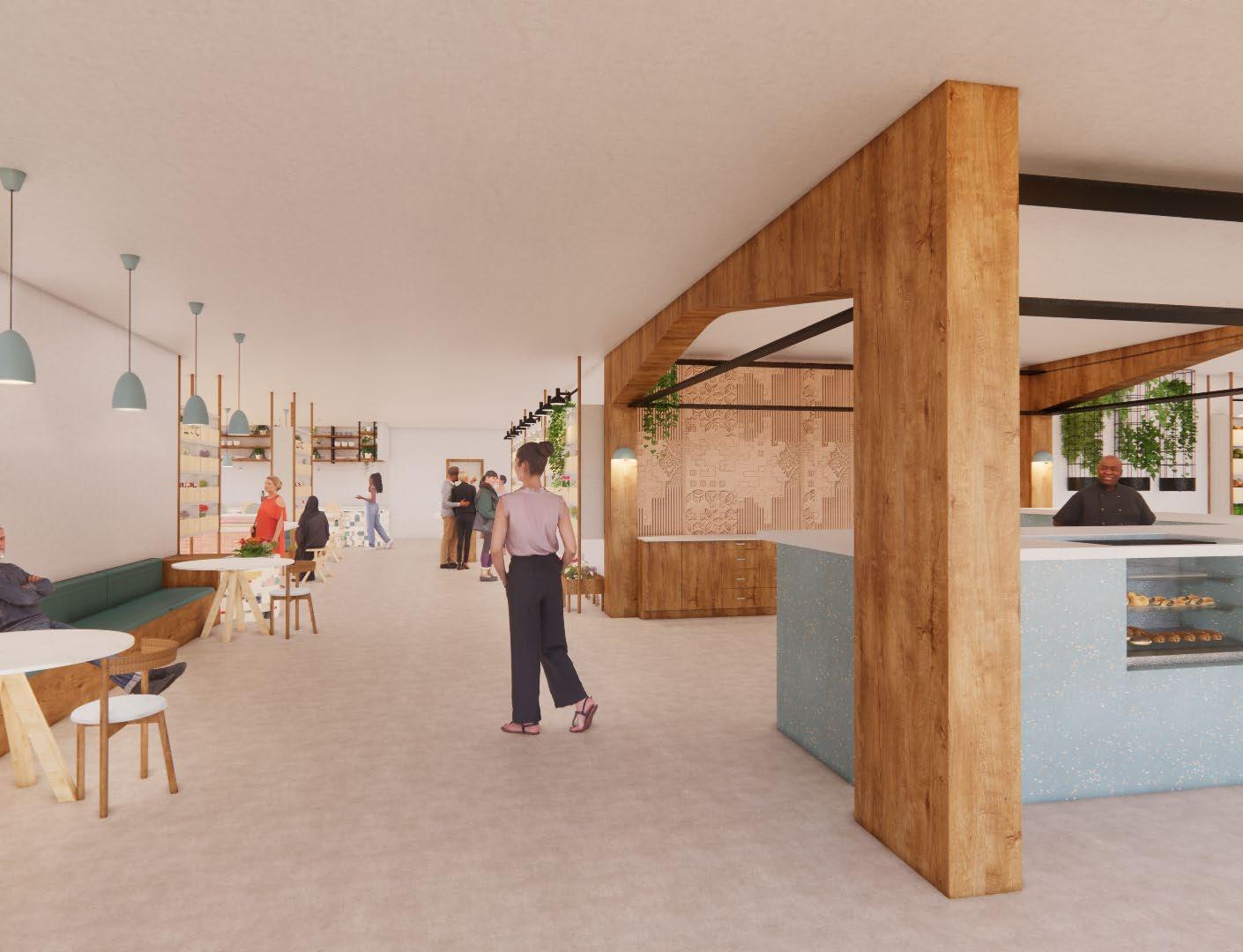
EVIDENCE-BASED DESIGN
12%
of the United States 45 million retirees decide to retire abroad
RETIREMENT IN GERMANY
climate is mild, generally warm + temperate. Paderborn has significant amounts of rainfall throughout the year, even in dry months. Temperature averages 48.8 degrees fahrenheit.
Germany is viewed as one of the safest countries in the world which plays a role in the consideration of retiring in the country. Popularity and necessity in independent retirement communities are rising. Retirees that reside in Germany have expressed to various platforms that the desire to live in a community amongst other retired citizens is desirable with the ability to still live freely and independently. For ex-pats, visitors who plan to stay 90+ days, must register with the local registration office + apply for a retirement visa. Much of retirement in Germany depends on one’s ability to prove that they have the funds to do so.
SITE
BERLINDESIGN FEATURES
A local market included in the retirement village promotes connectivity with others throughout the community. Residents create a sense of belongingness through community interaction.
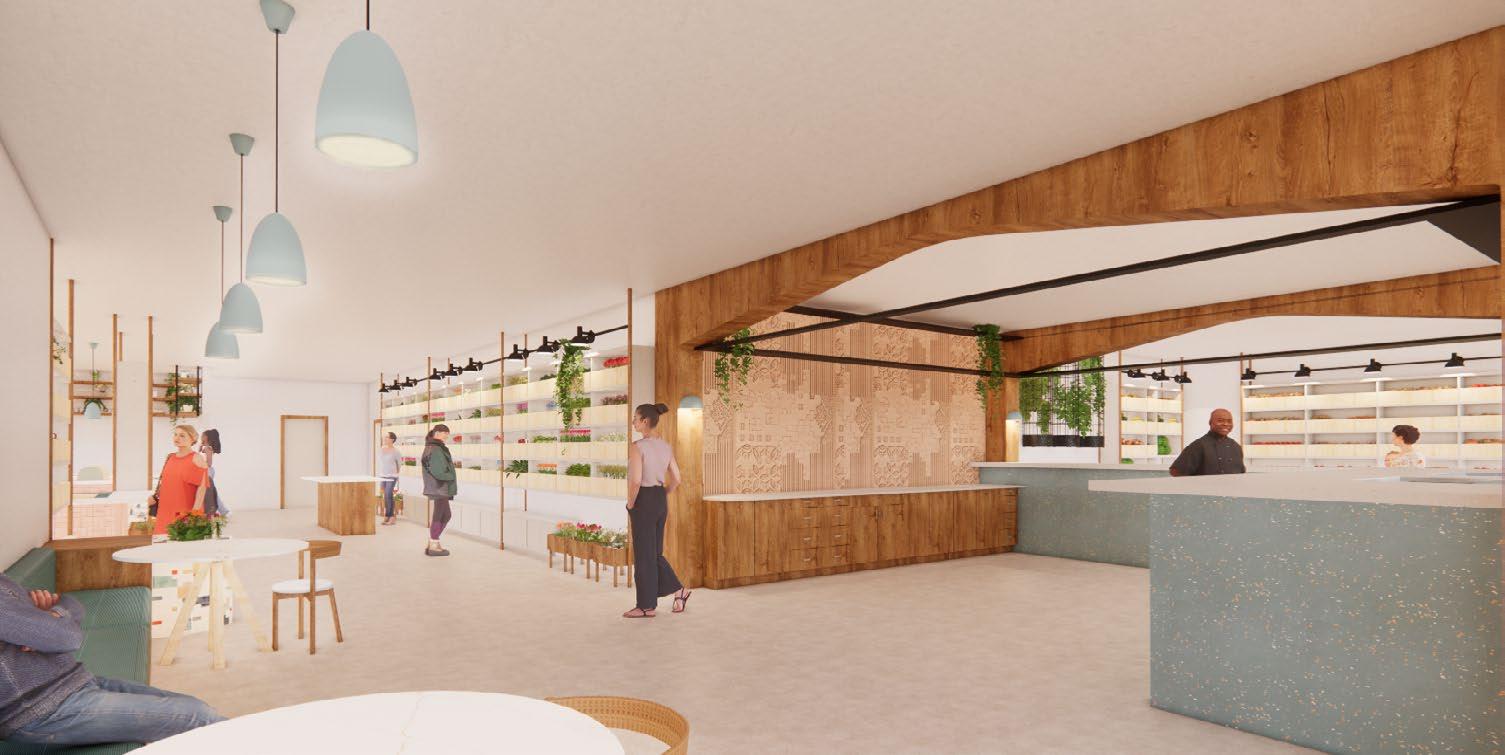
MUNICH
located in central Germany, Paderborn lies on the Pader River. a small affluent of the Lippe River formed from seepage on the slope of the Egge Mountain
the building was originally built as a 17th century capuchin monastery, then used as a hospital 1841 to 2013. the hospital was damaged in world war II
STRUCTURE ORGANIZATION
All residential suites consider universal design elements to create a community for those aging in the comfort of heimat village. Each suite includes a desk for work and eating, shelving for storage, and display space. Universal design elements include 27” of knee clearance for desk space provided between the floor and the underside of the table and the clothes rod is placed at the ADA maximum of 54” above the finish floor for a side approach.
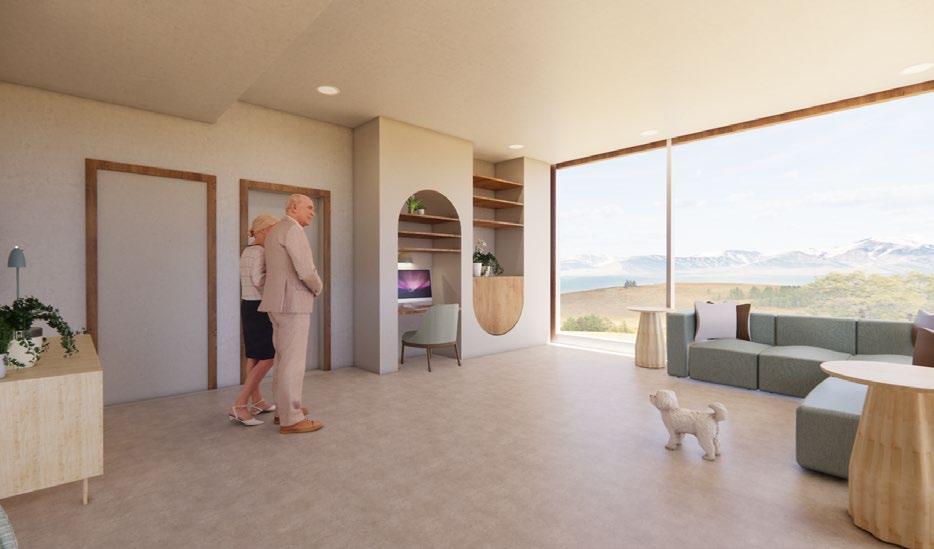
Promoting health and wellness throughout the village includes the consideration of how residents can incorporate movement into their daily routine. A pool located on the ground floor and center of the village provides a place for residents to relax and exercise. The fully equipped gym is located adjacent to the pool area.
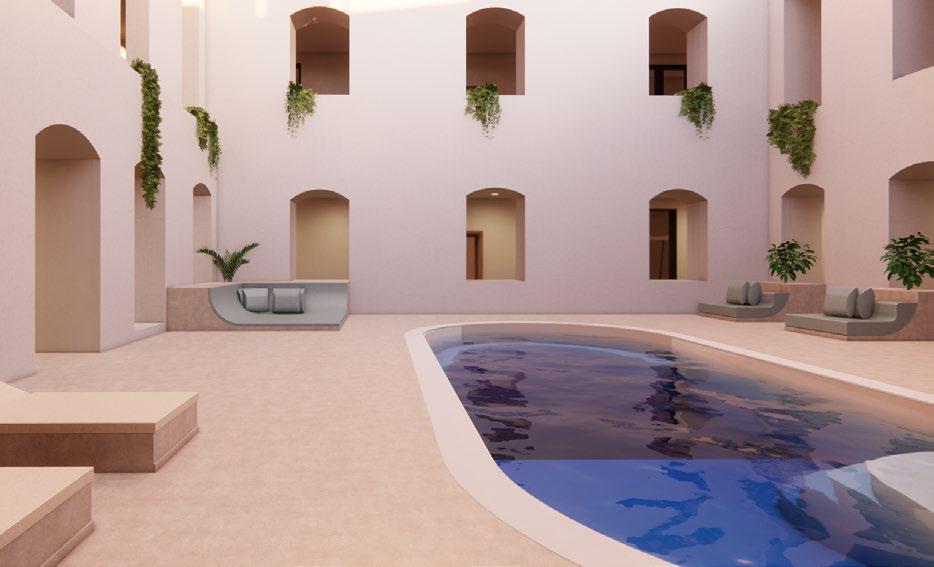
RESIDENTAL SINGLE SUITES
1A
SINGLE UNIT
500 SQ. FT
queen bed restroom sink
open closet desk / storage lounge
level one ground level
1B
SINGLE UNIT
500 SQ. FT
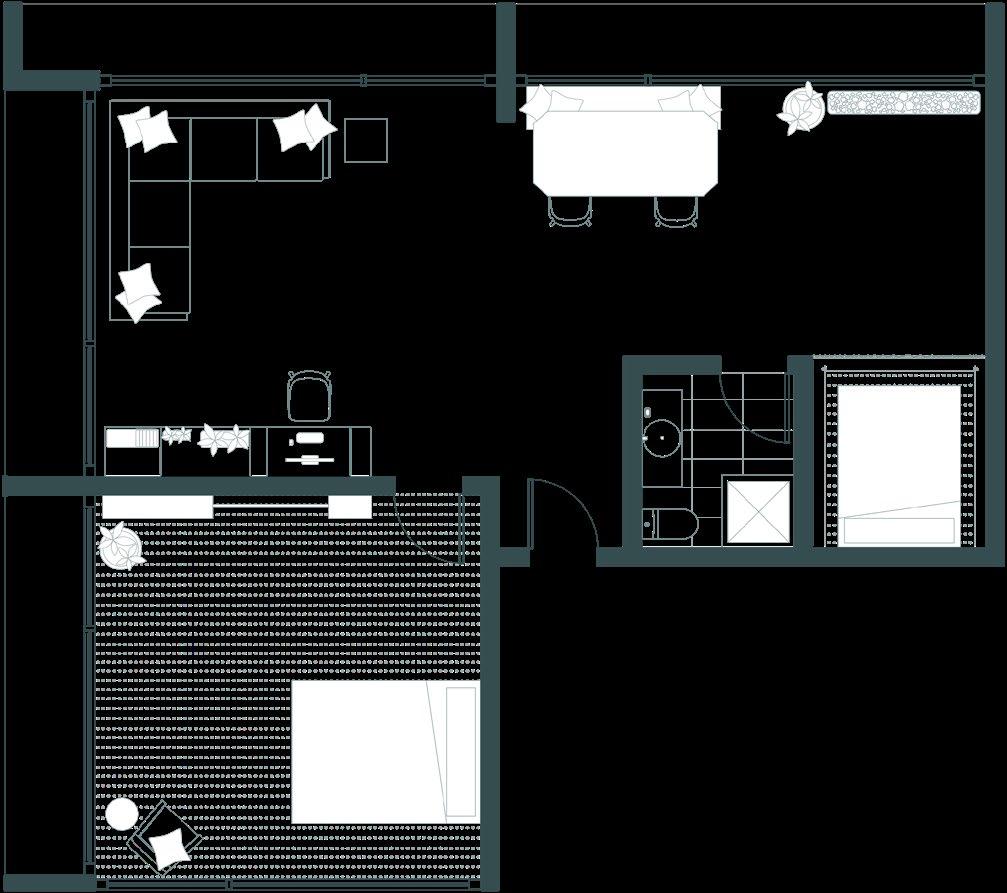
queen bed restroom sink
level one ground level
open closet desk / storage lounge
RESIDENTAL DOUBLE SUITES
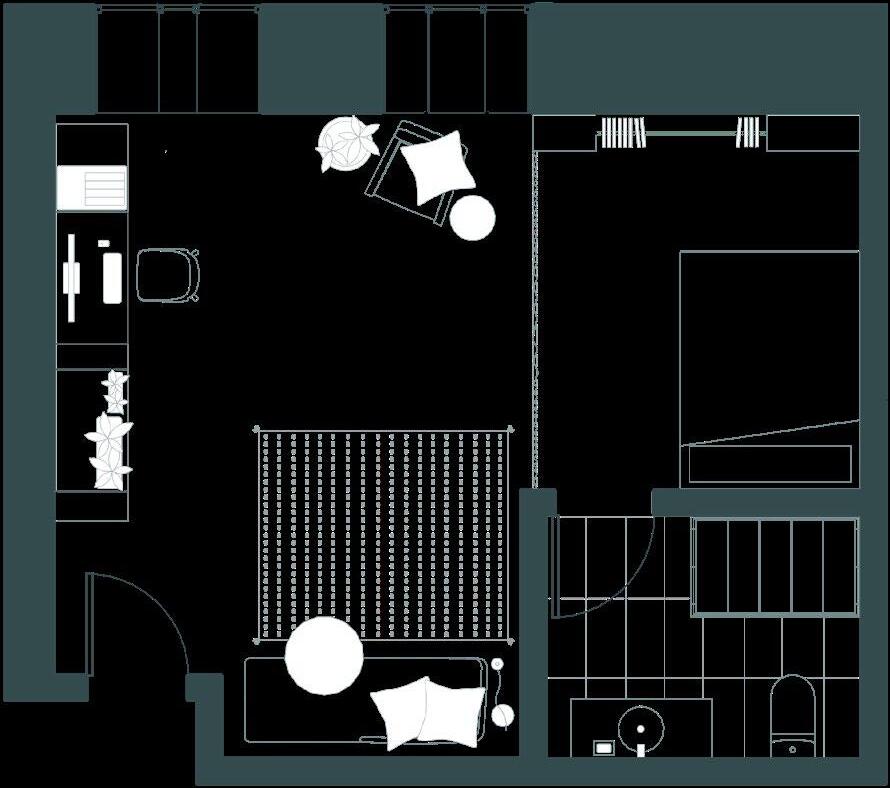
2A
DOUBLE UNIT
800 SQ. FT
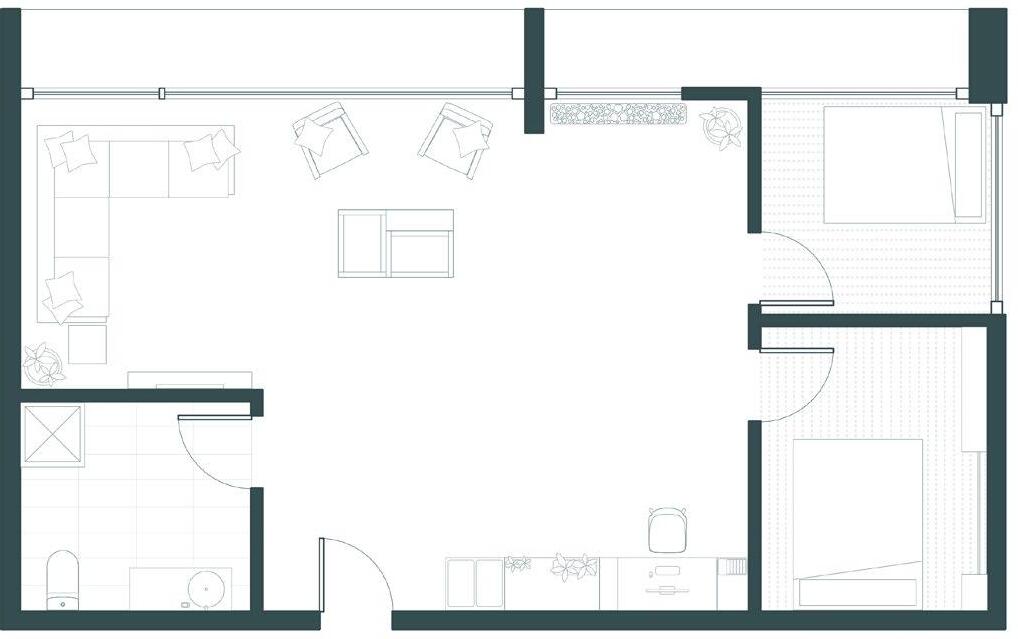
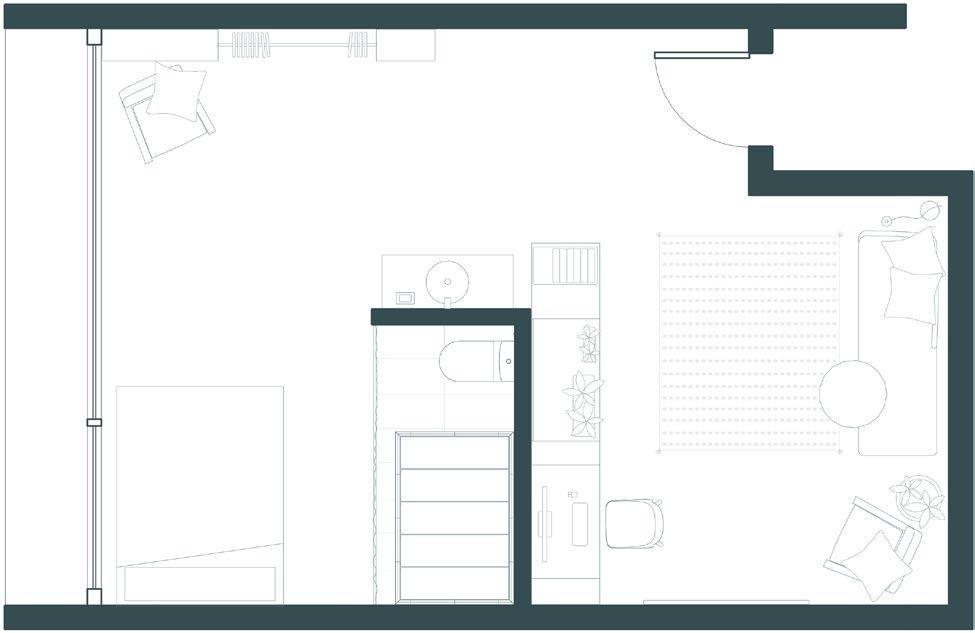
2 queen beds ADA restroom living area
lounge desk / storage gardening
level two
level one ground level
2B
DOUBLE UNIT
1,000 SQ. FT
king bed queen bed restroom living area
level two
level one ground level
dining area desk / storage gardening
original curves revolved to create form

Small, simple things in life matter the most, and inspire us to slow down, ground ourselves, and appreciate all surrounding us. Fireflies remind us to be intentional about the light we seek in others. The childhood, atmospheric memory of catching fireflies expresses the glowing articulated form of line, shape, texture, pattern, and shadow. Using a hybrid of traditional woodworking and “hi-tech” digital manufacturing the luminaire embraces the qualities and limitations of 3D printing.
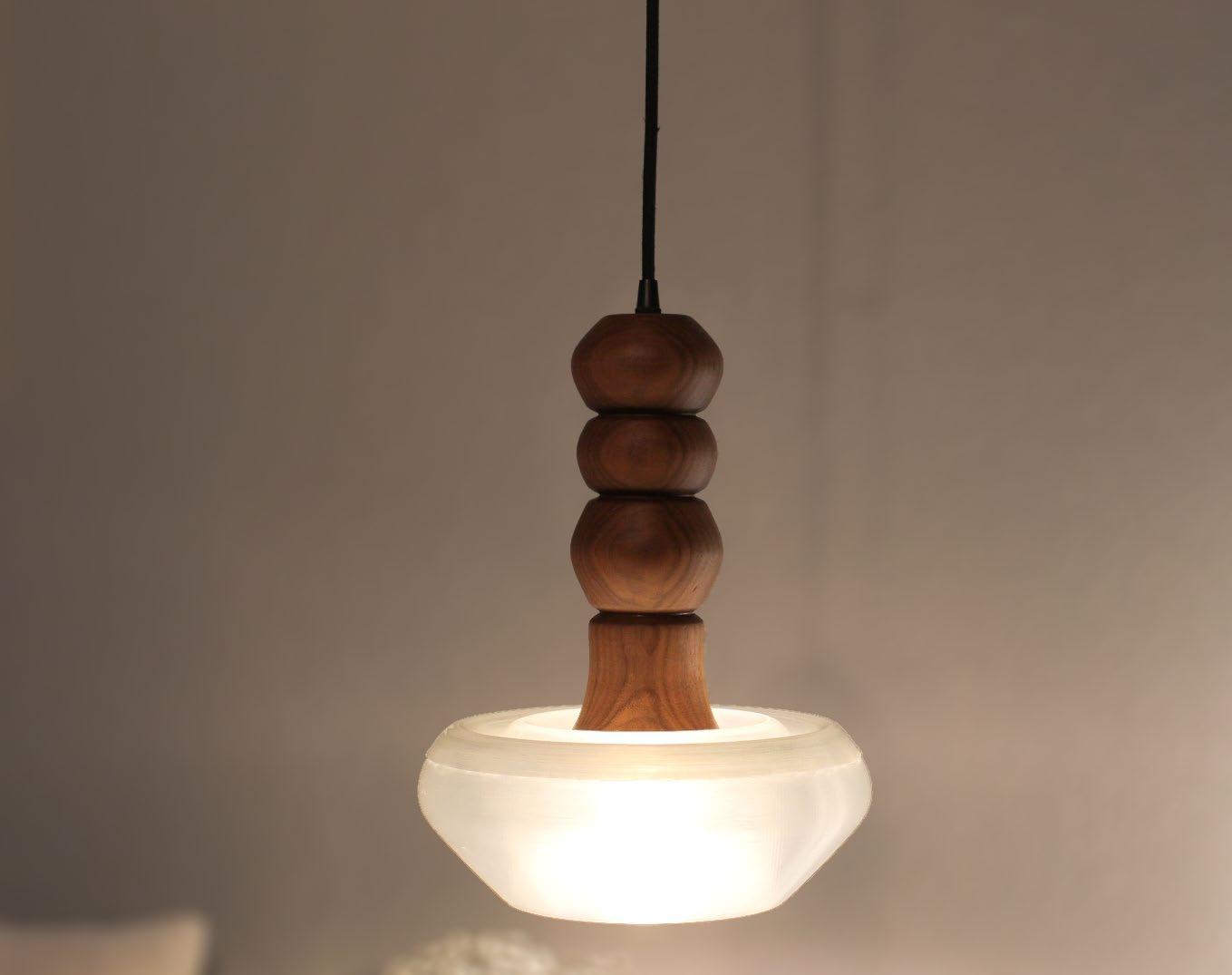
rotate + change angles to make 3D printable
create final curves to revolve + 3D print
cord grip

4” walnut turned on lathe, two 2” pieces of walnut were glue laminated to achieve the 4” diameter block
4” walnut turned on lathe, using lathe and forsener bit a 1 1/2” interior hole was made to fit socket
split at midline for structural connection
interior 3D printed piece
extra 3D printed piece glued to largest piece for aesthetics of form
largest 3D printed piece
3D printed piece that fits inside of layers above, most important layer structurally
DESIGN FEATURES
Inner layers of the 3D printed diffuser create the silhouette of the initial curve revolved to create form. When exposed to natural and artificial lighting, the interior form exposes the concept through its printed layers and amorphic shapes celebrating digital craftsmanship

CURVE / PATTERN
black walnut turned on lathe
socket gap for plastic
sclupt to cont. shape
2” black walnut
LED bulb
CONNECTION DETAIL
Lightning bugs have unique patterns they flash to communicate to other fireflies. These light patterns were analyzed and changed to a proportionate scale to create a curve that mimics the flashing patterns we are familiar with when catching fireflies. This curve was revolved on a center axis to create a cylindrical form that can be sculpted. Using a lathe and other traditional woodworking techniques the shape is carved into 4” black walnut.
Wooden components of the luminaire represent an inspiration from the unique patterns of lightning bug flashes to communicate with other fireflies. The 1/8” interior diameter of the cylindrical piece contains the tubing used to wire the pendant fixture. The sculpted wooden element protects the electrical components from exterior exposure while embracing the physical relationship between natural and digitally generated elements.
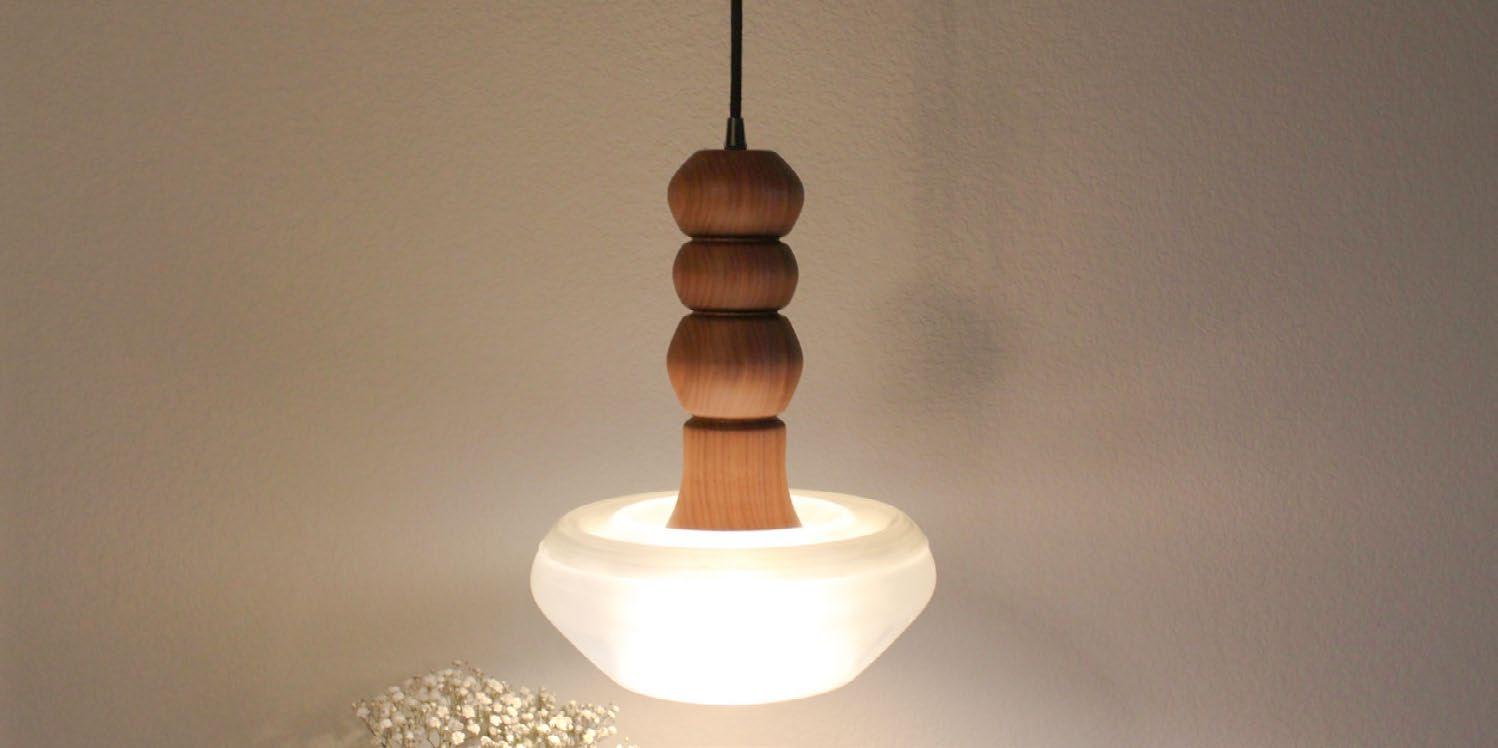
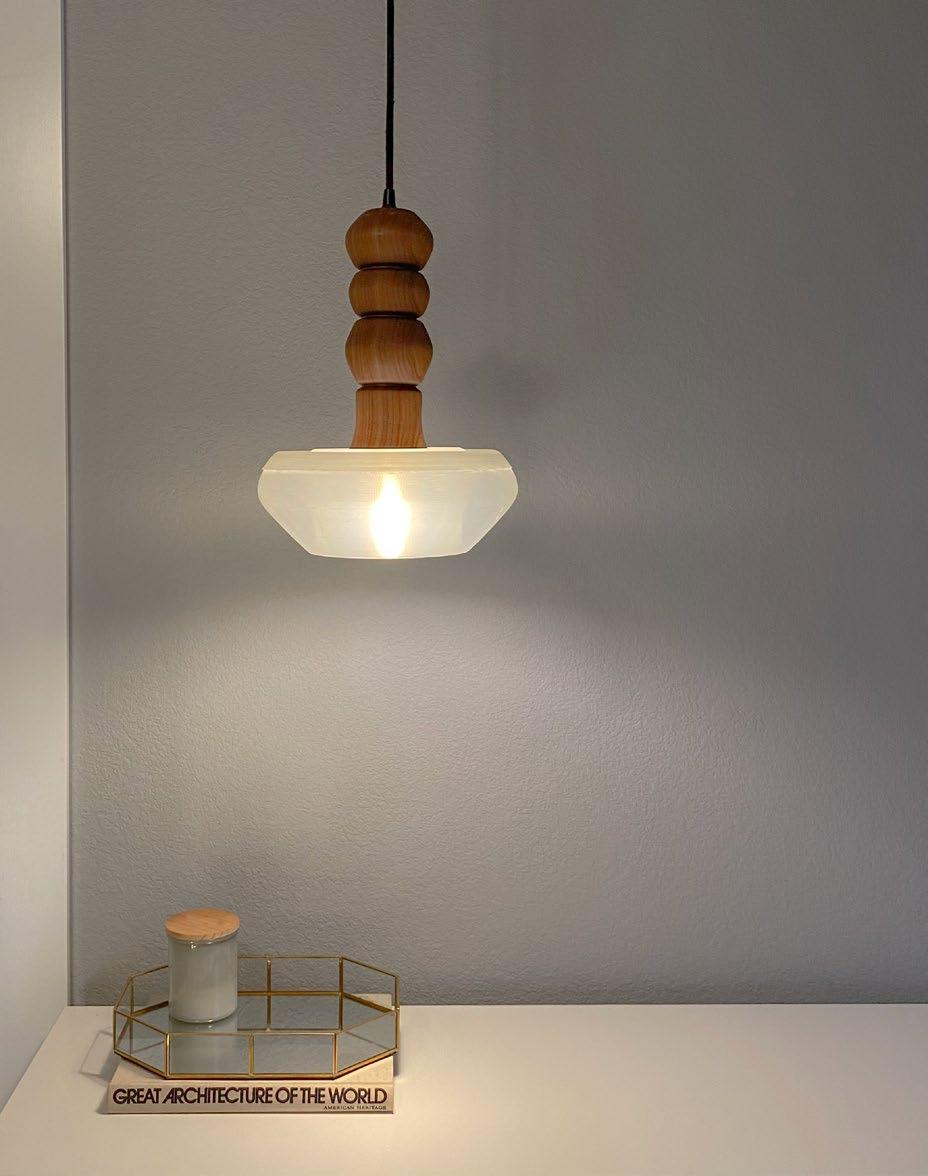
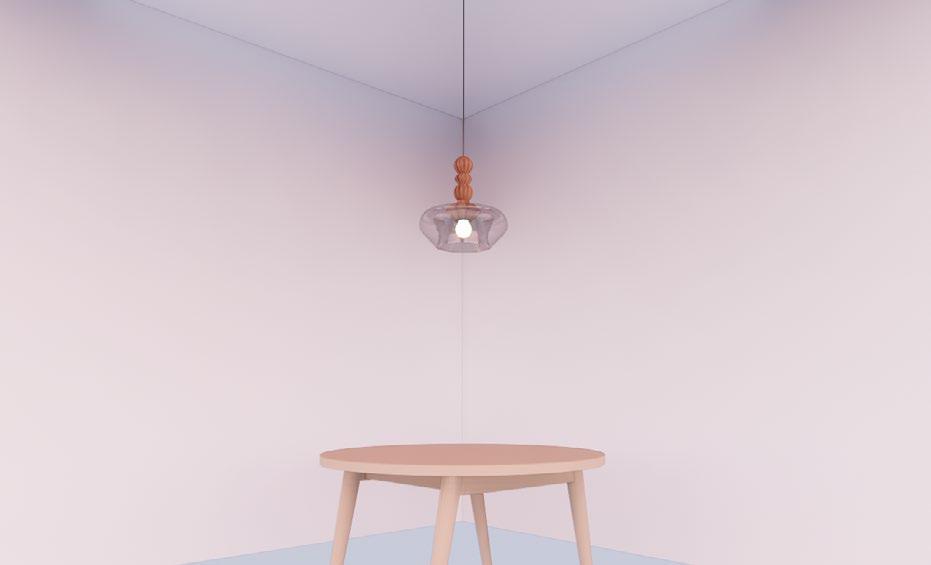
The constructability of the luminaire is strategic in the efforts to create the ability to adjust the light source. The LED bulb screwed into the socket fits seamlessly into the diameter of the smaller 3D-printed piece. This plastic component acts as the support for the entire piece but also allows for modifications to occur.
